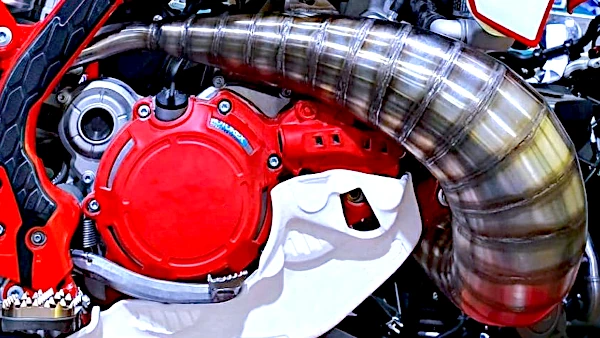How to Tune the Exhaust System on a Motorcycle with a 2-Stroke Engine
If you own a motorcycle with a 2-stroke engine, you know that the exhaust system plays a crucial role in the performance of your bike. The exhaust system is responsible for scavenging the exhaust gases from the engine and expelling them out of the tailpipe. The design and tuning of the exhaust system can have a significant impact on the power and torque output of your motorcycle.
In this article, we'll take a closer look at how to tune the exhaust system on a motorcycle with a 2-stroke engine. We'll also discuss the benefits of using aftermarket headers and how to install them.
Step 1: Determine Your Goals
Before you start tuning your exhaust system, it's important to determine your goals. Are you looking to increase the power and torque output of your motorcycle? Or do you want to improve the sound of your exhaust system? Depending on your goals, the tuning process will differ.
Step 2: Understand the Basics of Exhaust Tuning
To tune your exhaust system, you need to understand the basics of exhaust tuning. In a 2-stroke engine, the exhaust port opens before the piston reaches the bottom of the stroke. This creates a positive pressure wave that travels down the exhaust system and exits through the tailpipe. This pressure wave can be used to help draw in the next fuel-air charge into the cylinder.
The length and diameter of the exhaust system can have a significant impact on the power and torque output of your motorcycle. A shorter exhaust system will produce more high-end power, while a longer exhaust system will produce more low-end power.
Step 3: Install Aftermarket Headers
One way to improve the performance of your exhaust system is to install aftermarket headers. Aftermarket headers are designed to improve the flow of exhaust gases from the engine, which can increase power and torque output.
When selecting aftermarket headers, it's important to choose a design that is compatible with your motorcycle's engine and exhaust system. You should also consider the diameter and length of the headers to ensure that they will provide the desired performance gains.
Step 4: Tune the Exhaust System
Once you have installed aftermarket headers, it's time to tune your exhaust system. The tuning process will vary depending on your goals and the design of your exhaust system.
If you are looking to increase the power and torque output of your motorcycle, you may need to adjust the length and diameter of the exhaust system. This can be done by installing a different muffler or by adding or removing baffles from the existing muffler.
If you are looking to improve the sound of your exhaust system, you may want to experiment with different muffler designs or baffles. You can also adjust the length of the exhaust system to achieve a specific sound.
Step 5: Test and Refine
After tuning your exhaust system, it's important to test and refine the results. Take your motorcycle for a test ride and pay attention to the power and torque output, as well as the sound of the exhaust system.
If you are not satisfied with the results, you may need to make additional adjustments to the exhaust system. Repeat the tuning process until you achieve the desired performance and sound.
In conclusion, tuning the exhaust system on a motorcycle with a 2-stroke engine can have a significant impact on the performance and sound of your bike. By installing aftermarket headers and tuning the exhaust system, you can increase power and torque output, improve the sound of the exhaust, and even enhance the overall look of your motorcycle.
When tuning your exhaust system, it's important to keep in mind that there is no one-size-fits-all solution. Every motorcycle and rider is different, and what works for one person may not work for another. That's why it's important to take your time and experiment with different designs and tuning options to find the best solution for your needs.
In addition to the steps outlined above, there are a few additional tips to keep in mind when tuning the exhaust system on your motorcycle:
- Consider the type of riding you will be doing. If you primarily ride on the street, you may want to tune your exhaust system for low-end power and a quieter exhaust note. If you ride off-road, you may want to focus on high-end power and a more aggressive exhaust sound.
- Keep safety in mind. While tuning your exhaust system can be a fun and rewarding process, it's important to prioritize safety. Make sure you are using high-quality components and following all safety guidelines when installing and tuning your exhaust system.
- Don't be afraid to ask for help. If you're new to tuning exhaust systems, it can be helpful to consult with a professional mechanic or experienced rider. They can offer advice and guidance to help you achieve the best results.
Tuning the exhaust system on a motorcycle with a 2-stroke engine can be a challenging but rewarding process. With the right approach and some patience, you can achieve the performance and sound you're looking for and enjoy a more satisfying riding experience.
